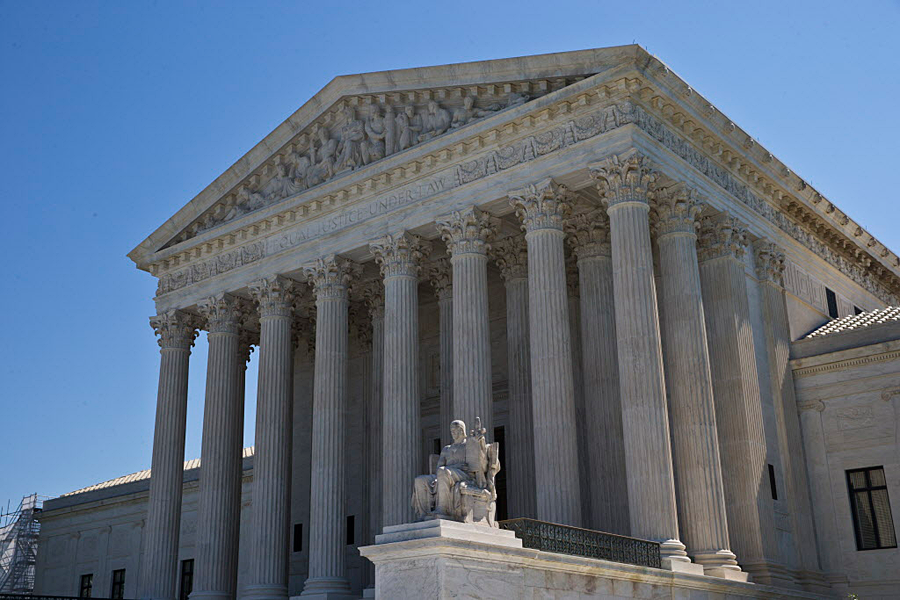Supreme Court's refusal to hear gun case leaves America divided
Loading...
As the Senate is scheduled to debate gun legislation Monday night, the US Supreme Court indicated earlier in the day it doesn't want any part in the argument.
The court declined to hear an appeal of New York and Connecticut's ban of semiautomatic weapons and large-capacity magazines that the Second US Circuit Court of Appeals upheld in October.
The Supreme Court has not made a major ruling on gun legislation since 2010, when it reaffirmed its 2008 finding in District of Columbia vs. Heller that an individual has a right to bear arms inside their home for self-defense.
The lack of any significant judicial ruling has left a fractured Congress and presidential administration to clash over Americans' right to bear arms versus the threat guns pose to public safety. The public, meanwhile, is equally divided over whether semiautomatic weapons such as the Sig Sauer MCX that Omar Mateen was armed with in Orlando should be banned or restricted from people on government watch lists.
The court's refusal to hear the appeal Monday leaves the New York and Connecticut laws in place. The bills were written shortly after the attack on Sandy Hook Elementary School in 2012, where a gunman with a semiautomatic rifle killed 20 young children and six educators at the school in Newtown, Conn.
The Connecticut legislation expanded a ban on assault weapons and high-capacity magazines, required universal background checks to purchase a gun, and created a dangerous-weapon offender registry and the requirement to obtain "eligibility" certificates to obtain bullets, rifles, and shotguns, as The Christian Science Monitor's Ron Scherer reported in 2013. New York joined Connecticut in enacting its own legislation, some of the strictest in the nation, which also banned some assault weapons and high-capacity magazines.
Gun advocates that included individual gun owners, the Coalition of Connecticut Sportsmen, and the New York State Rifle and Pistol Association challenged the two northeastern states' laws. The New York-based appeals court consolidated the two cases, and upheld the two laws because they found the importance of saving lives can trump the right to bear arms.
"At least since the enactment of the federal assault‐weapons ban, semiautomatic assault weapons have been understood to pose unusual risks," the court wrote, according to NPR. "When used, these weapons tend to result in more numerous wounds, more serious wounds, and more victims. These weapons are disproportionately used in crime, and particularly in criminal mass shootings like the attack in Newtown. They are also disproportionately used to kill law enforcement officers: one study shows that between 1998 and 2001, assault weapons were used to gun down at least twenty percent of officers killed in the line of duty."
Some gun owners, although not speaking directly to the appeals court decision, feel a ban of the assault weapon used in the Sandy Hook shooting is too extreme, given it is used in only about 1 percent of all murders in the US every year, as the Monitor's Patrik Jonsson reported after the Orlando shooting.
In fact, AR-15 owners suggest assault weapons help protect America.
"Go to any small town in Texas or Florida and you don't see crime ... because if anyone tries it, they're going to get ... shot," Daniel Hayes of Lexington, Ky., who owns an AR-15, told the Monitor.
A study by the Harvard T.H. Chan School of Public Health in 2015 polled 150 scientists who study gun violence and found that 84 percent disagree.
Americans, in general, are divided over whether assault weapons should be banned. A Pew Center study in 2015 found 57 percent of Americans favored an assault-weapons ban, although only 48 percent of both rural America and men felt the weapons should be banned. Over 65 percent of both women and Americans with post-graduate degrees felt the weapons should be banned.
The debate of the AR-15 and other assault weapons has heated up ever since the federal assault weapons ban expired in 2004. The law barred the manufacture and sale of semi-automatic guns with military-style features as well as magazines that held more than 10 rounds of ammunition.
The only major rulings the Supreme Court has issued on guns since then were those in 2008 and 2010, about personal firearms for self-defense in the home.
This report contains material from the Associated Press and Reuters.







